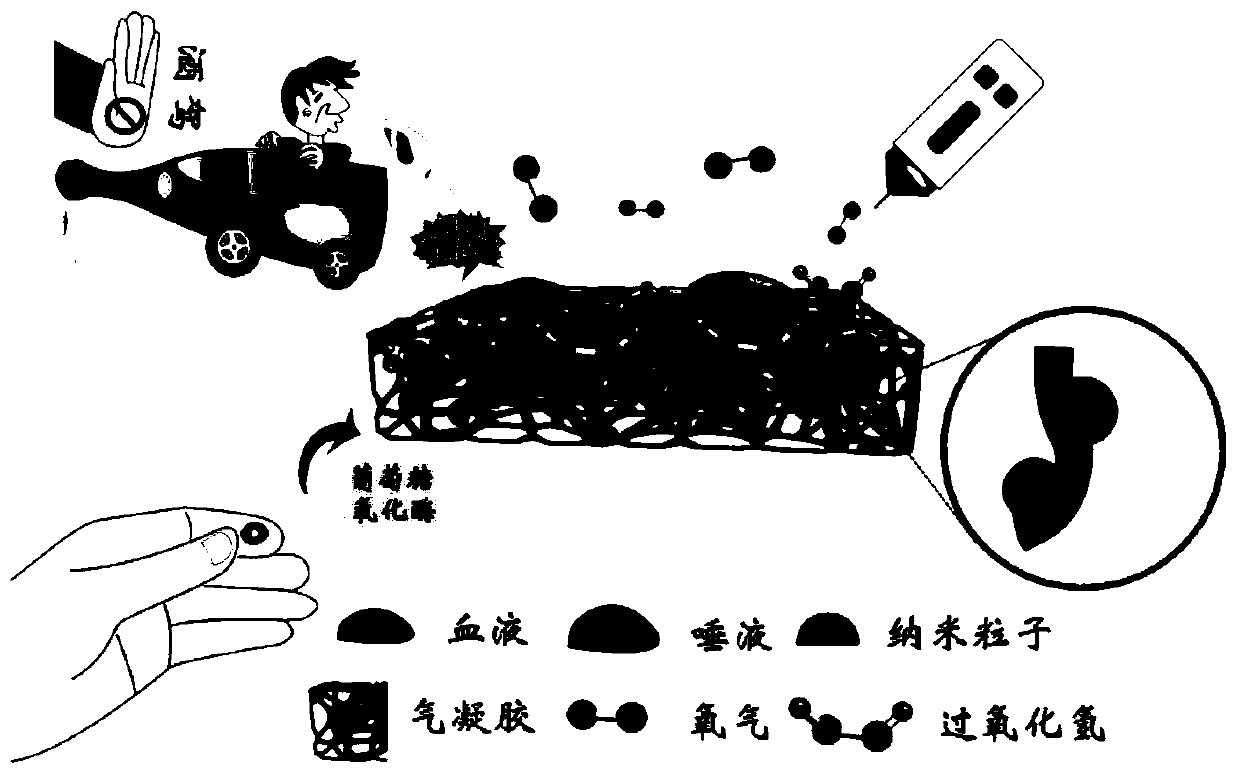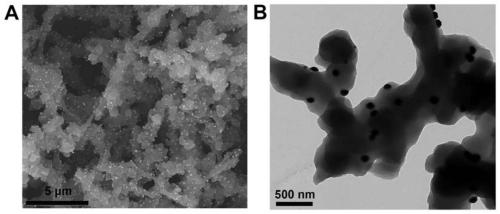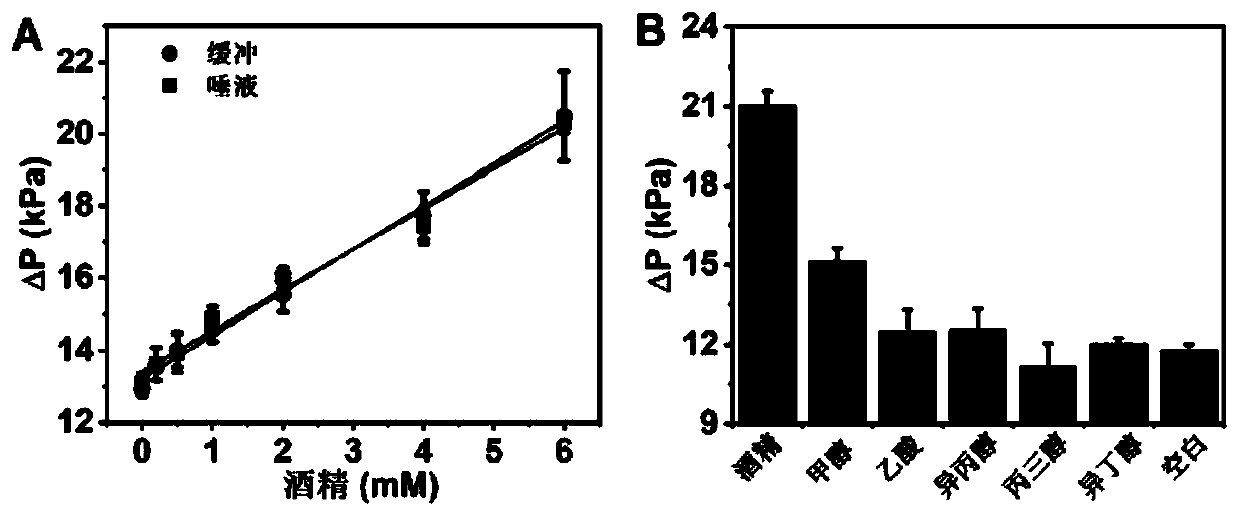Nanometer enzyme-aerogel composite material, detection method of alcohol content in saliva and detection method of glucose content in blood
A composite material and aerogel technology, applied in the field of detection, can solve the problems of impact and not widely used, and achieve the effect of simple operation, low cost and high sensitivity
- Summary
- Abstract
- Description
- Claims
- Application Information
AI Technical Summary
Problems solved by technology
Method used
Image
Examples
Embodiment 1
[0063] 1.1 Preparation of amphiphilic airgel
[0064] In polyvinyl alcohol aqueous solution 8.00g (mass concentration 6wt%), add crosslinking agent maleic acid 3.16g (the ratio of -COOH in the maleic acid and the -OH in the polyvinyl alcohol is 30 at this moment) %), then add mineral acid (concentrated sulfuric acid, 1 mL), and stir well. The reactor was placed in an oven at 200°C for 24 hours. The airgel obtained by the reaction was soaked in deionized water until the solution was neutral, and then freeze-dried.
[0065] 1.2 In situ growth of Pd@Pt nanoparticles
[0066] A solution containing Pt and Pd precursors (chloroplatinic acid, concentration 80mM and chloropalladium acid, concentration 40mM), surfactant (Pluronic F127, concentration 25mg / mL), reducing agent (ascorbic acid, concentration 200mM) was mixed with the parent The aerogels were mixed and fully infiltrated, and then reacted at 90° C. for 2 hours by a hydrothermal method to obtain a nanozyme-aerogel composite...
Embodiment 2
[0070] Detection of Alcohol Using Nanozyme-Aerogel Composite
[0071] Use the nanozyme-aerogel composite material prepared in Example 1 to collect biological samples-buffer or saliva, then add alcohol oxidase and seal. Alcohol oxidase decomposes alcohol in biological samples into hydrogen peroxide, and then under the catalysis of Pd@Pt nanoparticles in the nanozyme-airgel composite, hydrogen peroxide is decomposed into water and oxygen. Pressure detection by barometer.
[0072] Physiological conditions are used: 10 mM phosphate buffer solution, pH value is 7.4, temperature is 37°C. The alcohol contents are 0, 0.2, 0.5, 1, 2, 4, 6mM respectively. Alcohol is converted into oxygen through cascade catalysis, and the relationship between alcohol concentration and pressure is obtained, and the fitting curve conforms to ΔP=1.19C Alcohol +13.2(R 2 =0.994), the detection limit was 0.50mM.
[0073] In 40% saliva, the range of alcohol content is 0-6mM (alcohol content is 0, 0.2, 0.5...
Embodiment 3
[0079] The selectivity of this method to detect alcohol was investigated.
[0080] Alcohol analogues include methanol, acetic acid, isopropanol, glycerol, isobutanol, and the like.
[0081] Alcohol oxidase (10-40U / mg) was reacted with alcohol, methanol, acetic acid, isopropanol, glycerol, and isobutanol (both concentrations were 20mM) at 37°C for 30min, and then mixed with 1.0mg nanozyme-gas The gel composite material was reacted at 37°C for 15 minutes under airtight conditions, and the pressure was detected by a barometer.
[0082] The result is as image 3 as shown, image 3 Middle panel B is the histogram of the selective experiment for detecting alcohol.
[0083] It can be seen that compared with the above analogs, the detection of alcohol obtains the strongest response signal, and the response signals of acetic acid, isopropanol, glycerol, and isobutanol have no significant difference from the blank solution. The response signal of methanol is slightly higher because ...
PUM
| Property | Measurement | Unit |
|---|---|---|
| recovery rate | aaaaa | aaaaa |
| recovery rate | aaaaa | aaaaa |
Abstract
Description
Claims
Application Information
 Login to View More
Login to View More - R&D
- Intellectual Property
- Life Sciences
- Materials
- Tech Scout
- Unparalleled Data Quality
- Higher Quality Content
- 60% Fewer Hallucinations
Browse by: Latest US Patents, China's latest patents, Technical Efficacy Thesaurus, Application Domain, Technology Topic, Popular Technical Reports.
© 2025 PatSnap. All rights reserved.Legal|Privacy policy|Modern Slavery Act Transparency Statement|Sitemap|About US| Contact US: help@patsnap.com



